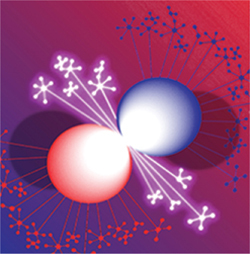B-cell Malignancy Therapy Is Associated with Worse COVID-19 Outcomes

Patients with B-lymphoid malignancies are at increased risk of severe COVID-19, but the impact of antineoplastic therapies on COVID-19 outcomes in this population is uncertain. Here Rubinstein et al. compare the outcomes of COVID-19 infection among 995 patients with B-lymphoid malignancies and multiple control populations of patients with cancer. The cohort size enables distinguishing contributions of lymphoid malignancy and of antineoplastic therapy, with adjustment for important prognostic factors. The results indicate that patients recently treated for B-lymphoid malignancies are at increased risk of severe COVID-19.
See article, p. 181.
Integrated Genomic Analysis Identifies UBTF Tandem Duplications as a Recurrent Lesion in Pediatric Acute Myeloid Leukemia

Genomic characterization of pediatric acute myeloid leukemia (AML) at relapse identified recurrent somatic tandem duplications of exon 13 of UBTF (upstream binding transcription factor) in nearly 10% of cases. These UBTF tandem duplication (TD) AMLs are associated with adolescence, FLT3 and WT1 cooperating mutations, yet do not occur with other known driver alterations. Extension into additional datasets demonstrates that UBTF-TDs are rare in adults and present in approximately 4% of children with AML at diagnosis. These UBTF-TD AMLs are associated with poor outcome and high rates of minimal residual disease positivity. Collectively, these findings suggest that UBTF-TD represents a new subtype of pediatric AML.
See article, p. 194.
Reconstructing Complex Cancer Evolutionary Histories Using Pairtree

Bulk DNA sequencing can identify a pool of mutations within a sample. With serial sampling of the same tumor, one can infer clonal evolution: which mutations likely cooccur in the same subclones and how the subclonal frequencies change through time, space, or lineage differentiation. The complex and noisy nature of bulk genomic sequencing data requires considerable computational resources to reconstruct clonal evolution, limiting applications to high-throughput and high-resolution datasets. Wintersinger et al. developed Pairtree, a computational method for building clonal evolution trees from deeply sampled cancer to construct much more detailed and accurate trees than previously possible. In B-cell leukemias, Pairtree used up to 90 samples per cancer to reveal up to 26 distinct cell populations. Increasing data complexity impairs performance of the existing algorithms, whereas Pairtree performs stably and with increased accuracy.
See article, p. 208.
IFNγ Promotes Dnmt3a-Mutant Clonal Hematopoiesis Through Txnip

DNMT3A mutations are recurrent in hematopoietic malignancies and in clonal hematopoiesis (CH), a preneoplastic state characterized by asymptomatic expansion of mutant hematopoietic stem and progenitor cells (HSPC). The expansion is explained by increased competitive fitness of mutant HSPC under specific selection pressure, such as Dnmt3a-mutant HSPC in IFNγ-driven emergency hematopoiesis. However, molecular and functional underpinnings of competitive fitness in CH remain uncharacterized. Zhang et al. identify the Dnmt3a–Txnip–p53–p21 axis as a molecular mechanism of Dnmt3a-mutant clonal advantage. Specifically, activation of this axis boosts quiescence and survival of Dnmt3a-mutant HSPC relative to their wild-type counterparts during IFNγ challenge, enabling the mutant HSPC to prevail.
See article, p. 220.
ZNF384 Fusion Oncoproteins Drive Lineage Aberrancy in Lineage Ambiguous Leukemia

ZNF384 fusion oncoproteins define a subtype of lineage ambiguous leukemia. In this article, Dickerson et al. utilize mouse and human models of ZNF384-rearranged leukemia to investigate the mechanisms of leukemogenesis. They show that expression of ZNF384 fusions in mouse and human progenitors skews hematopoietic development and drives lineage aberrancy, and cooccurring Ras mutations promote development of leukemia. This is accompanied by histone acetylation and deregulation of core hematopoietic transcription factors. In addition, ZNF384-fusion leukemia exhibits overexpression of FLT3 with sensitivity to FLT3 inhibition in xenograft models, providing a therapeutic approach in this high-risk subtype of leukemia.
See article, p. 240.


